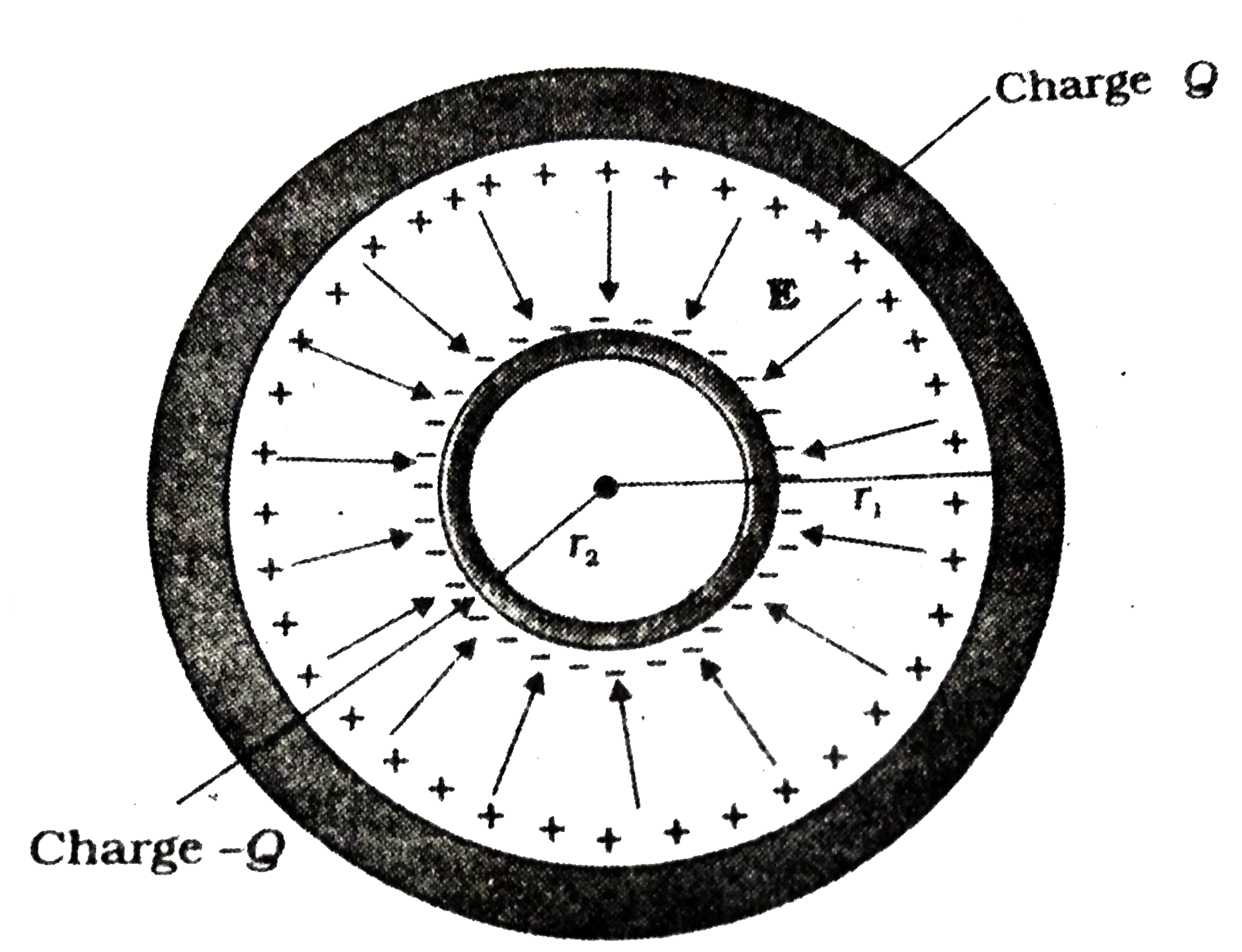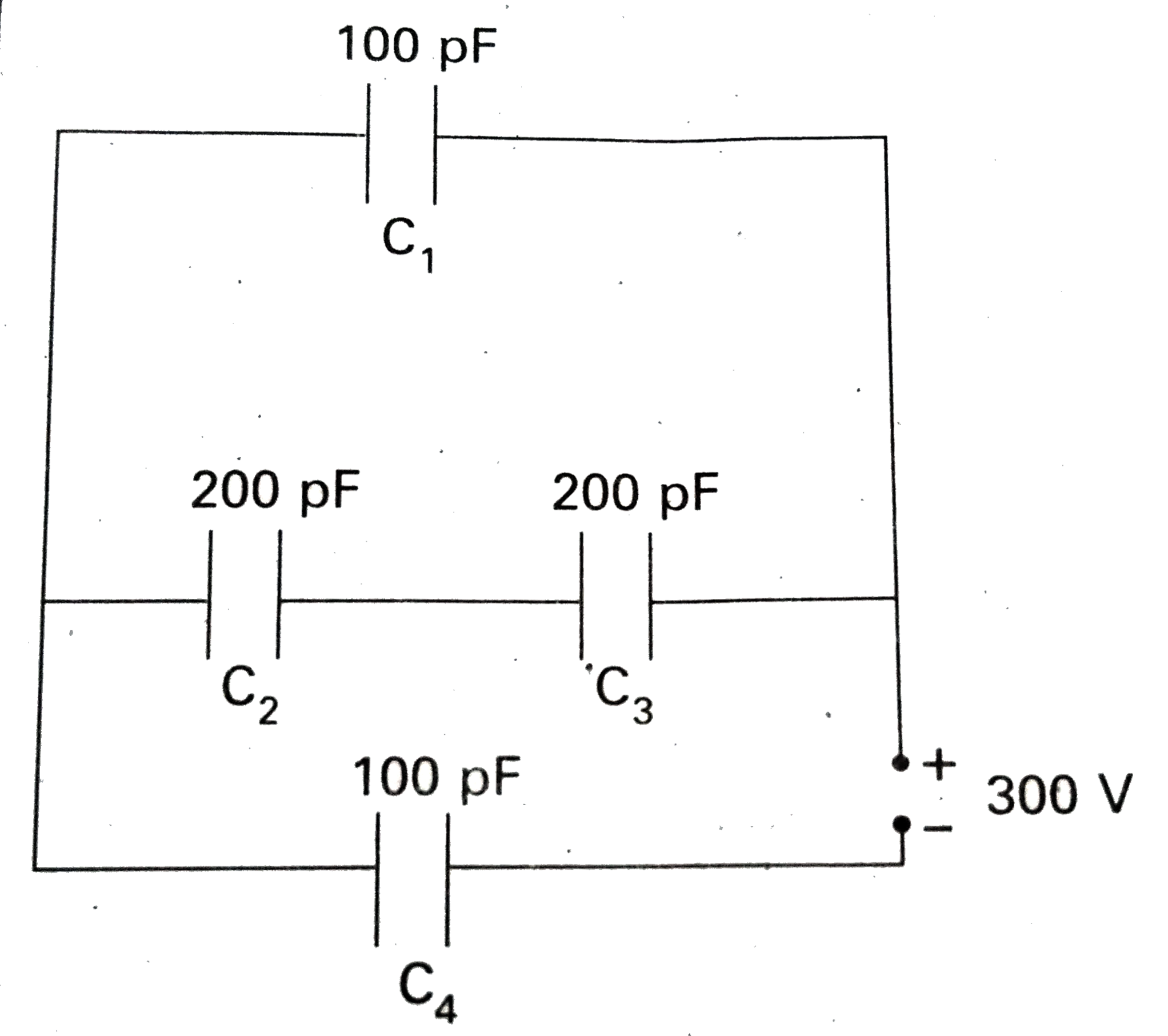Additional Excercise from VIKRAM PUBLICATION ( ANDHRA PUBLICATION) Chapter 10 ELECTROSTATIC POTENTIAL AND CAPACITANCE for Class 12
| Class 12 | PHYSICS |
| Chapter | ELECTROSTATIC POTENTIAL AND CAPACITANCE |
| VIKRAM PUBLICATION ( ANDHRA PUBLICATION) | Additional Excercise |
| Medium | English |
| Academic Year | 2023-2024 |
Question 3
Two tiny spheres carrying charges 1.5μC and 2.5μC are located 30 cm apart. Find the potential and electric field :
(a) at the mid-point of the line joining the two charges and
(b) at a point 10 cm from this midpoint in a plane normal to the line and passing through the mid-point. View SolutionQuestion 6
Show that the normal component of electrostatic field has a discontinuity from one side of a charged surface to another given by (E2−E1).∧n=σε0
Where ∧n is a nuit vector normal to the surface at a point and σ is the surface charge density at that point . (The direction of ∧n is from side 1 to side 2.) Hence show that just out side a conductor , the electric field is σ∧n/ε0.
(b) Show that the tangential component of electrostatic field is continuous from one side of a charge surface of another. use the fact that work done by electrostatic field on a closed loop is zero. ) View SolutionQuestion 8
In a hydrogen atom , the electron and proton are bound at a distance of about 0.53Å.
(a) Estimate the potential energy of the system in e V, taking the zero of the potential energy at infiniate separation of the electron from proton.
(b) What is the minimum work required to free the electron, given that is kinetic energy in the orbit is half the magnitude of potenital energy obtained in (a) ?
(c) What are the answers to (a) and (b) above if the zero of potential energy is taken at 1.06Å separation ? View SolutionQuestion 9
If one of the two electrons of a H2 molecule id removed , we get a hydrogen molecules ion H+2. In the ground state of an H+2. The two protons are separated by roughly 1.5Å. And the electron is at 1Å roughly from the nucleus. Find potential energy of the system. Specigy your choice of the zero of potential energy. View SolutionQuestion 10
Two charged conducting spheres of radii a and b are connected to each other by a wire. What is the ratio of electric fields at the surfaces of the two spheres ? Use the reuslt obtained to explain why charge density on the sharp and pointed ends of a conductor is higher than on its flatter portions. View SolutionQuestion 11
Two charges -q and +q are located at points (0,0-a) and (0,0-a), respectively.
(a) What is the electrostatic potential at the points (0,0,z) and (x,y,0) ?
(b) Obtain the dependence of potential on the distance r of a point from the origin when r/a>>1.
(c) How much work is done in moving a small test charge from the point (5,0,0) to (-7,0,0) along the x-axis? Does the answer change if the path of the test charge between the same points is not along the x-axis ?View SolutionQuestion 12
An electrical technician requires a capacitance of 2μF in a circuit across a potential difference of 1kV. A large number of 1μFcapacitors are available to him each of which can withstand a potential difference of not more than 400V. Suggest a possible arrangement that requires the minimum number of capacitors. View SolutionQuestion 13
What is the area of the plates of a 2 F parallel plate capacitor , given that the separation between the plates is 0.5cm ? [You will realise from your answer why ordinary capacitors are in the range of μF or less. However , electrolytic capacitors do have a much larger capacitance (0.1F) because of very minute separation between the conductors.]View SolutionQuestion 15
The plates of parallel plate capacitor have an area of 90cm2 each and area separated by 2.5mm. The capacitor is charged by connecting it to a 400V supply.
(a) How much electrostatic energy is stored by the capacitor ?
(b) View this energy as stored in the electrostatic field between the plates , and obtain the energy per unit volume n, Hence arrive at a relation between u and the magnitude of electric field E between the plates. View SolutionQuestion 18
A spherical capacitor consists of two concentric spherical conductors, held in position by suitable insulating supports (Fig). Show that the capacitance of a spherical capacitor is given by C=4πε0r1r2r1−r2

where r1andr2 are the radii of outer and inner spheres , respectively. View SolutionQuestion 19
A spherical capacitor has an inner sphere of radius 12 cm and an outer sphere of radius 13 cm. The outer sphere is earthed and the inner sphere is given a charge of 2.5μC. The space between the concentric spheres is fillled with a liquid of dielectric constant 32.
(a) Determine the capacitance of the capacitor.
(b) What is the potential of the inner sphere ?
(c) Compare the capacitance of this capacitor with that of an isolated sphere of radius 12 cm. Explain why the latter is much smaller. View SolutionQuestion 27
A cylinderical capacitor has two co-axial cylinders of length 15 cm and radii 1.5cm and 1.4 cm . The outer cylinder is earthed and the inner cylinder is given a charge of 3.5μC. Determine the capacitance of the system and the potential of the inner cylinder. Neglect end effets (i.e., bending of filed lines at the ends). View SolutionQuestion 28
A parallel plate capacitor is to be desigined with a voltage rating 1kV, using a material of dielectric constant 3 and dielectric strength about 107Vm−1 (Dielectric strength is the maximum electric field a material can tolerate without breakdown, i.e., without starting to conduct electricity through partical ionisation. ) For safety, we should like the field never to exceed, say 10% of the dielectric strength. What minimum area of the plates is required to have a capacitance of 50 pF? View SolutionQuestion 29
Describe schematically the equipotential surfaces corresponding to
(a) a constant electric field in the z-direaction .
(b) a field that uniformaly increases in magnitude but reamins in a constant (say,z) direction.
(c) a single positive charge at the origin, and
(d) a uniform grid consisting of long equally spaced parallel charged wires in a plane. View SolutionQuestion 30
In a Van de Graff type generator a spherical metal shell is to be a 15×106V electrode. The dielectric strength of the gas surrounding the electrode is 5×107Vm−1. What is the minimum radius of the spherical shell required ? (You will learn from this excerise why one cannot build and electrostatic generator using a very small shell which requires a small charge to acquire a high potential. ) View SolutionQuestion 31
A small sphere of radius r1 and charge q1 is enclosed by a spherical shell of radium r2 and charge q2. Show that if q1 is positive , charge will neecessarily flow from the sphere to the shell ( when the two are connected by a wire ) no matter what the charge q2 on the shell is . View SolutionQuestion 32
The top of the atmosphere is at about 400kV with respect to the surface of the earth , corresponding to an electric field that decreases with altitude. Near the surface of the earth, the field is about 100Vm−1. Why then do we not our house into the open? (Assume the house to be a steel cage so there is no field inside)View SolutionQuestion 34
The discharging current in the atmosphere due to the small conductivity of air is known to be 1800 A on an average over the globe . Why then does the atmosphere not discharge it self completely in due course and becomed electrically neutral ? In other words, what keeps the atmosphere charged? View Solution

